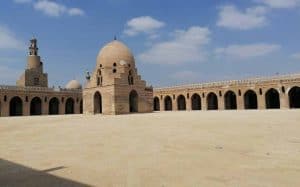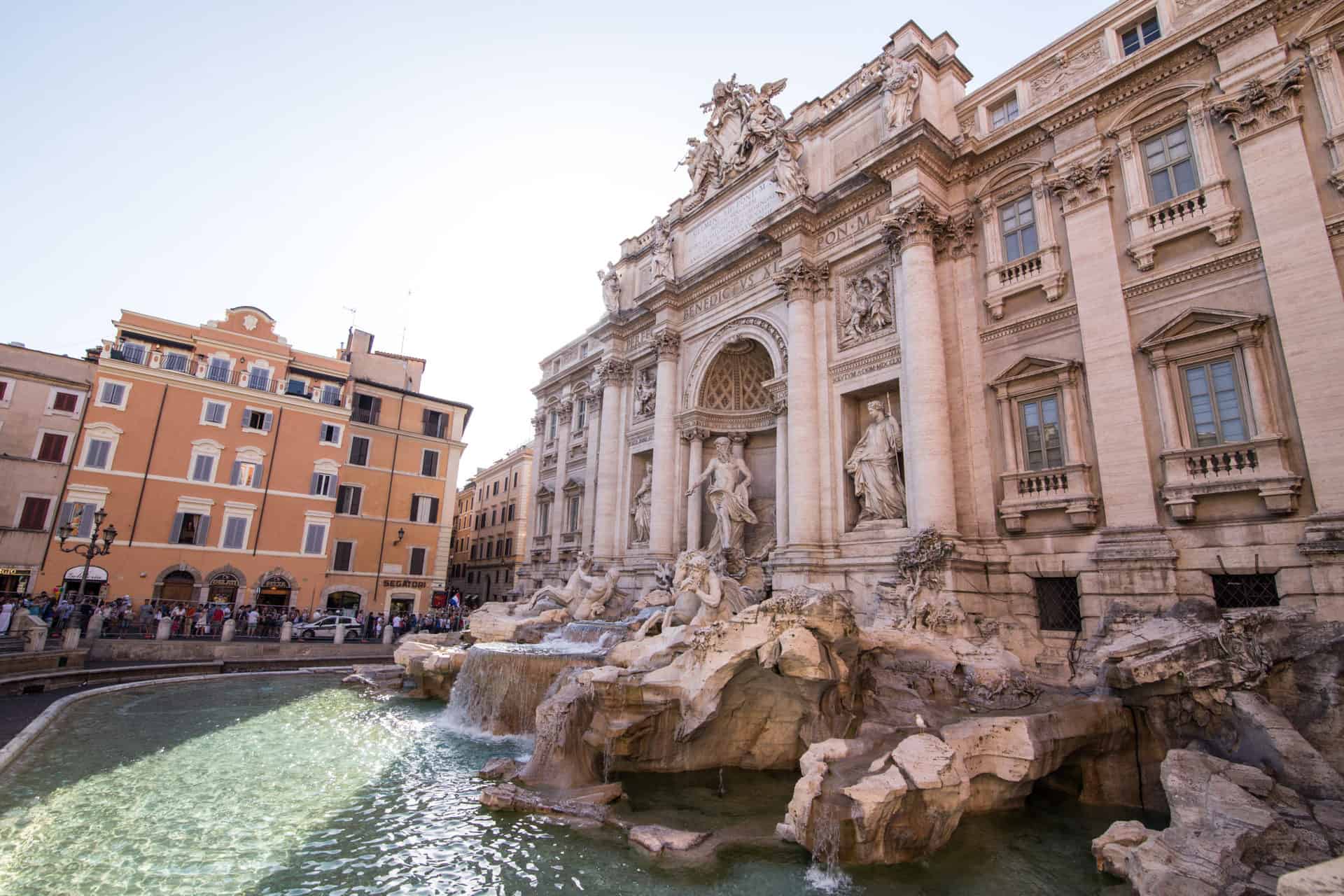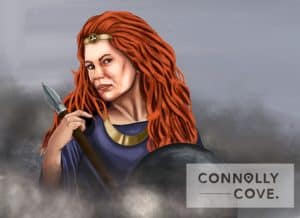The Renaissance of Indigenous Art: Unearthing Rich Traditions from Australia to the Americas

Updated On: April 22, 2024 by Yasmin Elwan
Indigenous art, rich in tradition and story, has experienced a robust revival across the globe. From the red deserts of Australia to the verdant forests of the Americas, this renaissance is not just an artistic awakening but a reaffirmation of cultural identity. In Australia, the indigenous peoples have brought forth a tapestry of visual languages that bridge the ancient with the contemporary, reflected in the vibrant dot paintings and potent symbols telling stories passed down through generations.

Across the Americas, the artistic traditions of the indigenous communities have similarly found new life. They infuse modern aesthetics with the lore and practices of their ancestors, creating artwork that challenges perceptions and evokes a deep sense of heritage. This resurgence extends beyond the canvas, influencing the global narrative on culture and history. The engagement with museums, national galleries, and international exhibitions plays pivotal roles in elevating indigenous art to a platform where dialogue and recognition can flourish.
Historical Context of Indigenous Art

Indigenous art is intrinsically linked to the histories and cultures of Aboriginal and First Nations peoples. For tens of thousands of years, our ancestors have utilised art as a medium to convey the essence of Dreamtime, a term describing the Aboriginal understanding of the world, its creation, and its great stories. Indigenous art is not merely for aesthetic appreciation; it serves as a vital connection to tradition, culture, and the land.
Art forms have historically ranged from rock engravings, dot painting, ground designs, to intricate carvings and woven items, each with profound cultural meanings. Aboriginal art, among the world’s oldest continuing art traditions, is deeply tied to the land, and it often depicts totemic landscapes and sacred legends transmitted across generations.
In the Americas, First Nations peoples have similarly used art to express their diverse cultural narratives. Indigenous art encompasses a wide variety of media, including basketry, mask carving, and totem pole construction, each enriched by its own unique cultural significance and history.
Key Elements of Indigenous Art:
- Aboriginal Art: Often characterises sacred landscapes.
- Ancestors & Dreamtime: Sources of inspiration and central to Aboriginal spirituality.
- First Nations Art: Embodies rich traditions and diverse cultures.
- Tradition & Culture: Maintained through practices passed down over generations.
- Diversity: Reflects the rich tapestry of Indigenous cultures across Australasia and the Americas.
Our approach to understanding Indigenous art must be characterful of respect and reverence for its deep historical roots and its crucial role in maintaining the fabric of Indigenous cultures. Through art, we gain insights into the diversity and resilience of these ancient traditions that continue to thrive and inform us today.
Indigenous Art in Australia
Indigenous art in Australia encompasses the rich and diverse expressions of Aboriginal and Torres Strait Islander peoples. This art form extends from ancient traditions and Dreamings to dynamic compositions in contemporary Aboriginal art.
Evolution of Aboriginal Art
Aboriginal art, deeply entwined with Australian culture, has journeyed from the sacred rock paintings and engravings to modern canvases that depict ancestral stories. The traditional Indigenous art practices like dot painting and bark painting are techniques passed down through generations. These methods often represent Dreamings, the foundational stories and spiritual lore of First Nations artists, and connect them to the land.
Prominent Aboriginal Artists
The sector is home to a number of prominent Aboriginal artists who’ve earned international recognition for their work. For example, the late Rover Thomas is recalled for his participation in the Venice Biennale, whilst Trevor Nickolls is known for fostering both traditional elements and contemporary Aboriginal art. Their pieces resonate with the spiritual and cultural heritage of their communities.
Galleries and Exhibitions in Australia
Galleries across Australia play a crucial role in the preservation and exhibition of Aboriginal and Torres Strait Islander art. The National Gallery stands prominent for its significant collection that encapsulates the heritage and evolution of Indigenous art. Moreover, events like the Biennale of Sydney highlight the incredible diversity and creativity within this category, showcasing both ancestral techniques and modern interpretations.
Indigenous Art Across the Americas
The indigenous art of the Americas tells a story of cultural resilience and creativity that spans from the Arctic Circle to the tip of South America. As we examine the vibrant tapestry of native artwork, we uncover a spectrum of traditions that are as diverse as the landscapes they originate from.
First Nations Art of North America
First Nations art is deeply rooted in the spiritual and physical connections that First Nations people have with the land. This art often reflects the values and narratives of the communities, as seen in the intricately carved totem poles of the Pacific Northwest—each pole narrates stories, lineages, and legends. From the Haida to the Cherokee, the artistic expressions vary widely; the Inuit, for instance, are famous for their soapstone carvings, while the Navajo’s woven textiles are highly prized.
- Representative tribal arts include:
- Totem poles and masks from the Haida and Kwakwaka’wakw
- Inuit sculptural works in soapstone and bone
- Navajo woven rugs and blankets with intricate patterns
In recent years, the revival and celebration of First Nations art have become an integral part of cultural identity and continuity throughout North America. Institutions like the Denver Art Museum showcase the historical and contemporary significance of these artistic practices.
Indigenous Artistic Expression in South America
In South America, indigenous art is an amalgamation of ancient techniques and modern articulations, representing the continent’s diverse ethnic groups. Much of the traditional art comes from the Andean cultures, like the intricate pottery and textiles of the Quechua people. These items are not only aesthetically compelling but also hold cultural significance, often used in rituals and ceremonies.
- Key artistic forms include:
- Textiles and pottery from Quechua and Aymara communities
- Carved wood and woven baskets from Amazonian tribes
- Monumental stone architecture, such as that constructed by the Incas
The art from these regions embodies the spirit and history of their creators, revealing a world where every thread and symbol has meaning. Artists today are mixing ancient methods with contemporary themes, ensuring that the rich tapestry of South America’s indigenous heritage continues to thrive in a modern context.
The Role of Museums and National Galleries

Museums and national galleries play a pivotal role in the resurgence of Indigenous art, serving as cultural custodians and educators. They have the responsibility to present Indigenous art in a manner that respects the cultural significance and context from which it originates, often working in consultation with Indigenous communities.
In Australia, efforts to showcase Indigenous art are prominent within institutions such as the National Gallery of Australia and the Art Gallery of South Australia. These galleries have taken significant steps to ensure that the presentation of Indigenous art is done thoughtfully and with cultural sensitivity.
National Gallery of Australia:
- Notable for its extensive collection of Indigenous Australian art.
- Engages with Aboriginal and Torres Strait Islander peoples in the curation process.
Art Gallery of South Australia:
- Hosts exhibitions that highlight the richness of Indigenous art.
- Collaborates with Indigenous artists to provide education on the cultural heritage.
Art galleries across Australia strive to indigenise their spaces, making them inclusive and reflective of the country’s dual heritage. By doing so, they champion not only the aesthetic qualities of Indigenous works but also their inherent cultural narratives and histories.
In the Americas, museums are actively working to decolonise their exhibits. This involves expanding narratives to include Indigenous perspectives and histories, which were often overlooked in the past.
- Museums:
- Exhibit Indigenous art alongside other collections to provide a more integrated narrative.
- Focus on community engagement and the inclusion of Indigenous voices.
We recognise that these institutions are crucial in bridging cultural gaps and enhancing understanding of Indigenous art on both national and international stages. By embracing this role, museums and national galleries contribute significantly to the cultural landscape and influence how Indigenous art is perceived globally.
Representation and Narratives in Indigenous Art
In the artistic tapestry of Indigenous art, we observe a profound narrative woven with threads of history and identity. The stories embedded in this art are a testament to the resilience and enduring spirit of Indigenous cultures from Australia to the Americas. Through their artistic expression, Indigenous artists convey essential aspects of their communities’ lived experiences, encompassing both past and present.
Narratives: Central to Indigenous art are the narratives that depict the connective tissue of community life, encapsulating lore, tradition, and historical narratives. Each artwork becomes a vessel carrying the weighty tales of creation, struggle, and triumph.
Representation: Indigenous artists employ a rich visual language to reflect the world around them; their works serve not just as a form of aesthetic pleasure but as a medium for representation. Within their canvases and sculptures, a diverse spectrum of Indigenous life is portrayed, offering viewers a window into the soul of these cultures.
- Artistic Expression: Visual arts serve as a bridge between generations, carrying forward the distinctive artistic styles that underline cultural identity.
- Historical Narratives: Pictorial representations often embody historical narratives that are fundamental to Indigenous heritage.
- Stories: These are shared through motifs and symbols that resonate with the spiritual beliefs and societal structures of the communities.
We find that Indigenous art is less an object of contemplation and more a conversation, one that invites participation in the dialogue about heritage, sovereignty, and future aspirations. By valuing Indigenous voices and perspectives within their art, we embrace the beauty and complexity of Indigenous cultures, thereby challenging stereotypes and nurturing a more inclusive society. The representation of Indigenous art in modern culture is, therefore, essential for fostering diversity and preserving heritage.
Tradition and Innovation in Contemporary Works
In contemporary Indigenous art, we witness a harmonious blend of tradition and innovation. Artists skilfully merge cultural motifs with modern mediums such as acrylic paints and canvases, creating works that encapsulate the vitality of their heritage.
Tradition in this context refers to the enduring elements of Indigenous art, such as symbolism, storytelling, and connection to land. These have been the foundation of Indigenous cultures for millennia and continue to be central in contemporary artworks. By preserving these aspects, artists ensure that the essence of their culture remains strong and visible within a modern framework.
Innovation in Indigenous art is exemplified by the adoption of new materials and techniques. For example, the use of acrylic paints allows for vibrant, lasting colours that bring traditional themes to life in a new light. Contemporary Indigenous artists also experiment with different canvas sizes and shapes, pushing the boundaries of conventional presentation.
- Acrylic Paints: Provided a versatile palette for artists.
- Canvases: Became a modern storyteller of ancient tales.
The dynamism between tradition and innovation is also evident in the Denver Art Museum’s exhibit, where the works of Cherokee artist Kay WalkingStick are showcased, blending traditional themes with contemporary expressions.
Furthermore, the rise of Indigenous art on a global stage is echoed through K Art’s discussion of the increasing mainstream recognition of such artworks, underlining the success Native contemporary artists are achieving.
We observe that Indigenous artists are not only preserving the past but also shaping the future, creating a resilient bridge between their ancestral legacies and the evolving art world.
Challenges and Resilience of Indigenous Communities

Indigenous communities across the world have faced numerous challenges throughout history. Their resilience is a testimony to their strength and capacity to survive. The following points outline some of the key challenges and the remarkable resistance these communities have demonstrated.
- Challenge: Indigenous peoples often struggle with the loss of land and erasure of cultural practices due to past colonisation efforts.
- Resistance: Activism and vocal opposition to injustices have become a powerful tool in fighting for Indigenous rights and recognition.
- Resilience: There is an ongoing renaissance in Indigenous art, ranging from the Australian Aboriginal art movement to Native American traditions, showcasing their rich and vibrant cultures.
Survival persists in the face of modern challenges, such as environmental threats and economic pressures that disproportionately affect Indigenous territories.
- Recognition: Steps are being taken worldwide to acknowledge and rectify historical wrongs. This includes the inclusion of Indigenous narratives and perspectives within academia and public discourse.
- Reconciliation: While there is still a long way to go, acts of reconciliation are emerging, with collaborative projects and cultural sharing that aim to bridge the gap between Indigenous and non-Indigenous communities.
In our work, we have seen how Indigenous art forms – from visual to performative – not only reflect the lived experiences of these communities but also contribute to their resilience. Through art, there is healing, empowerment and the forging of connections to tradition and identity. It is through these mediums that stories of both suffering and strength are told, ensuring that the cultures and histories of Indigenous people continue to be recognised and celebrated.
Identity and Cultural Practices
In exploring the Renaissance of Indigenous Art, we find that identity and cultural practices stand firmly at the core. Indigenous art acts as a powerful conduit for expressing cultural identity, where every brushstroke captures the storied history and rich traditions of its people. Through mediums such as dance, song, and, more recently, film, these art forms maintain and celebrate the unique heritages of indigenous communities.
Family, particularly in the Indigenous Australian context, is intertwined with cultural practices. Their narrative paintings tell of kinship and the connections to the land that are passed down through generations. These stories find new life in contemporary dance performances, which encapsulate the essence of traditional movements and rhythms, propelling them onto the global stage.
Indigenous songs, often a blend of historic tunes and contemporary lyrics, are pivotal in preserving language and storytelling traditions. They carry deep symbolic meanings and foster a sense of community and identity among the listeners. Similarly, Indigenous film is emerging as a significant avenue for sharing stories, often communicating the nuances of Indigenous experience to a wider audience and securing a place for Indigenous voices in mainstream media.
Our engagement with these art forms is not merely a passive observation but a journey towards understanding and honouring the vibrant cultural tapestries that shape identities. As we witness the cultural renaissance from Australia’s Aboriginal communities to the Native peoples of the Americas, we see a reaffirmation of pride and a reclaiming of space in the world’s cultural conversations.
Impact of Colonisation on Indigenous Art
Colonisation has had a profound impact on Indigenous art, fundamentally altering the cultural landscape in regions from Australia to the Americas. The imposition of colonial rule and values disrupted traditional artistic expressions and forced Indigenous artists into a complex interaction between survival and resistance.
Survival: Indigenous art became a vital means of cultural preservation, a silent rebellion against the loss of ancestral lands and traditions. Creatives continued to produce works, often under duress, safeguarding their heritage and identity.
Stereotypes: Colonial powers often promoted reductive stereotypes, depicting Indigenous communities as ‘primitive’. This led to Indigenous art being misunderstood and, at times, undervalued within mainstream art contexts.
Appropriation: Indigenous motifs and styles were frequently appropriated by colonial artists, disassociating the art from its cultural significance and original creators. This practice commodified Indigenous art, relegating it to a trend rather than respecting it as a meaningful expression of a living culture.
Resilience: Despite these challenges, Indigenous art has experienced a renaissance, with artists reclaiming their narratives and asserting their sovereignty through their work. This renewal showcases the resilience and the ongoing importance of art to Indigenous communities’ cultural survival.
Through the resilience of Indigenous artists, cultural narratives and traditional knowledge are being revitalised, which is reshaping perceptions and providing a platform for healing and self-determination.
The Market and Value of Indigenous Art

Indigenous art, encompassing a rich array of mediums such as paintings, bark paintings, engravings, boomerangs, and spears, has seen a remarkable surge in its valuation and presence in the global art market. Australian Indigenous art, in particular, has entrenched itself within the realm of fine art, with its traditional and contemporary artworks becoming symbols of national identity and cultural heritage.
The industry has witnessed an exponential growth in recent decades. For instance, the Aboriginal art market has expanded significantly, becoming an international phenomenon. Nonetheless, it is imperative to acknowledge the challenges within the market, where authenticity and representation have been concerns, with not all artworks sold being created by Indigenous individuals.
Within the market, the value of Indigenous artwork is not only monetary but also intrinsic, holding deep cultural significance and serving as a vessel for storytelling and preservation of traditions. Whilst it can be lucrative, with Australian Indigenous art being valued in the hundreds of millions, the true worth lies in its cultural capital and the empowerment of Indigenous communities.
Indigenous art from the Americas similarly carries substantial cultural and historical importance. The renewed global interest has led to the fostering of cross-cultural dialogue and opportunities for Indigenous artists to gain international recognition.
In aligning with our appreciation for the diverse art forms around the world, we observe the importance of sustaining the vitality of Indigenous cultural expressions. As the art continues to gain prominence, it’s vital for the industry to safeguard against inauthentic practices and for collectors to value the art’s profound cultural roots.
International Recognition and Exhibitions
The Indigenous art movement has garnered significant international acclaim, striking resonantly with global audiences and collectors alike. It’s a testament to the profound cultural expression and narrative that these artworks embody.
In the realm of prestigious events, the Venice Biennale has been a pivotal platform for Indigenous artists. This revered exhibition showcases the mosaic of human creativity, and the inclusion of Indigenous art has expanded our collective artistic heritage. Indigenous Australian art, for instance, continues to captivate on this stage, contributing to the rich tapestry of the Biennale’s offerings.
The Biennale of Sydney is another event that has brought Indigenous art to the forefront with innovative pieces that challenge and redefine contemporary art practice. Recognised globally, the Biennale has bolstered the visibility and appreciation of Indigenous artistry.
Exhibitions dedicated solely to Indigenous works have emerged as powerhouses of cultural exchange. One such notable showcase is the ‘Everywhen: The Eternal Present in Indigenous Art from Australia’. Curated by the Harvard Art Museums, this exhibition, along with its insightful catalogue, has shed light on the timeless nature of Indigenous art.
Furthermore, Indigenous Australian art has increasingly captured the spotlight at major auction houses, like Sotheby’s, affirming its status in the international art market. The diversity and resilience of this art form have fuelled a rising presence across continents.
We observe the international recognition of Indigenous art as an encouraging sign of a more inclusive appreciation of the world’s artistic variance. It is a commitment to cultural dialogue that crosses oceans and continents, and proudly, we are witness to a historic shift.
Frequently Asked Questions
In this section, we address common inquiries related to Indigenous art’s development, impact, and unique characteristics. From the Dreamtime to the present day, these questions delve into the essence of Indigenous artistic traditions.
What are the traditional functions of Indigenous Australian artwork?
Indigenous Australian artwork traditionally serves as a narrative tool, capturing the rich tapestry of cultural stories, laws, and spiritual beliefs passed down through generations. This art often acts as a means to maintain a strong connection with the land and ancestral heritage.
How has the history of Indigenous art evolved over time?
Initially, Indigenous art was produced for practical and ceremonial purposes, utilising natural materials. Over time, it has gained recognition as a vital form of cultural expression, leading to a flourishing art movement that shares Indigenous stories with the world.
What distinguishes Australian colonial art from Indigenous art?
Australian colonial art typically reflects the perspective of European settlers and often features landscapes and portraiture in a Western artistic style. In contrast, Indigenous art is characterised by its connection to country and Dreamtime stories, utilising traditional symbols and techniques.
What are the primary sources of inspiration for Indigenous artworks?
Indigenous artworks are primarily inspired by the Dreamtime, ancestral stories and spirituality, the natural environment, and the artist’s personal connection to the country. These elements merge to form a profound commentary on identity and cultural endurance.
How are contemporary Indigenous artists influenced by their cultural heritage?
Contemporary Indigenous artists are deeply influenced by their cultural heritage, often blending traditional practices with modern techniques to create artworks that speak to both past and present Indigenous experiences and issues.
In what ways is Indigenous art being revitalised in modern contexts?
Indigenous art is being revitalised through global exhibitions, collaborations, and the infusion of contemporary mediums. This allows for the preservation and innovative evolution of traditional techniques, ensuring that the art form remains dynamic and relevant.






